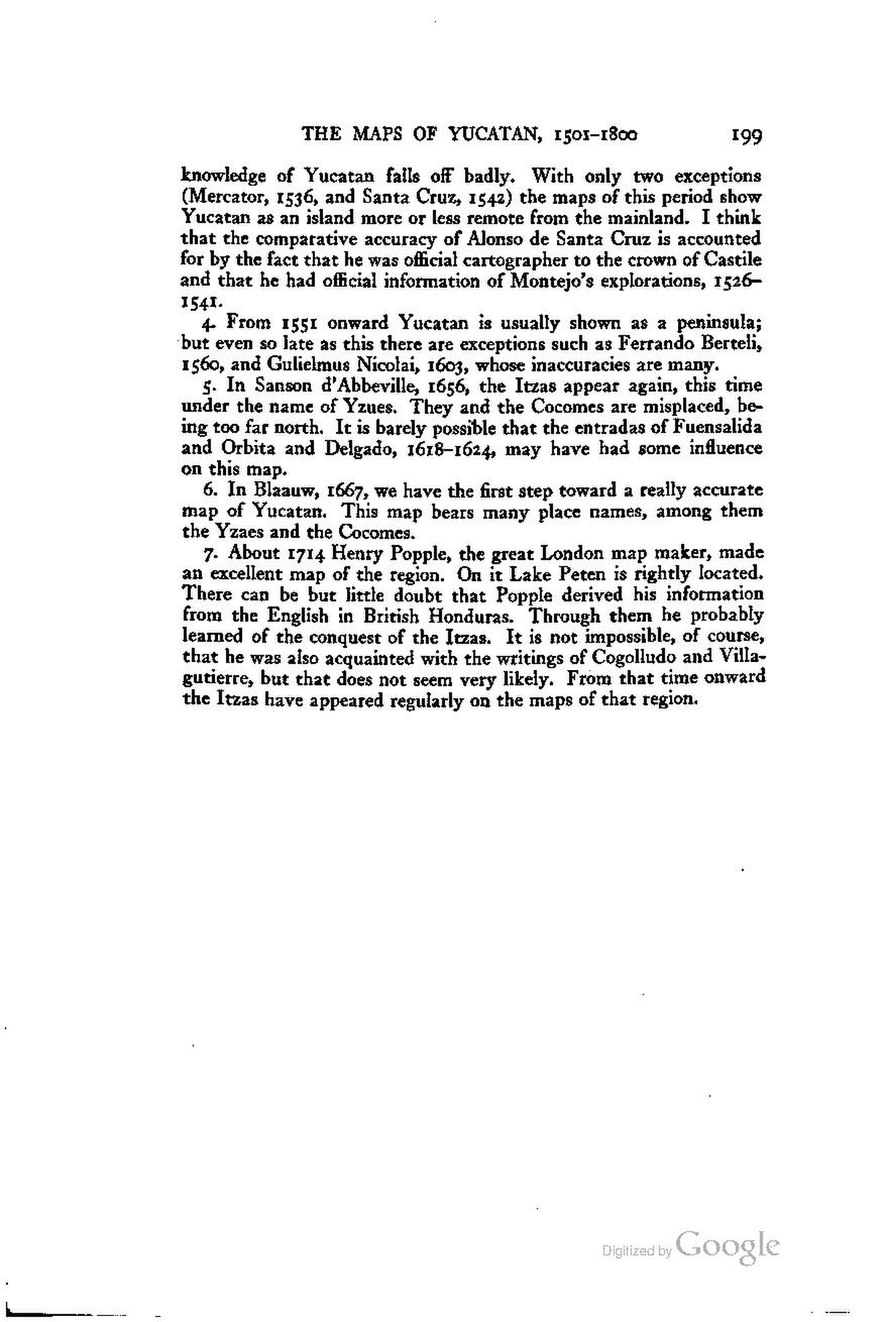knowledge of Yucatan falls off badly. With only two exceptions (Mercator, 1536, and Santa Cruz, 1542) the maps of this period show Yucatan as an island more or less remote from the mainland. I think that the comparative accuracy of Alanso de Santa Cruz is accounted for by the fact that he was official cartographer to the crown of Castile and that he had official information of Montejo's explorations, 1516-1541.
4. From 1551 onward Yucatan is usually shown as a peninsula; but even so late as this there are exceptions such as Ferrando Berteli, 1560, and Gulielmus Nicolai, 1603, whose inaccuracies are many.
5. In Sanson d'Abbeville, 1656, the Itzas appear again, this time under the name of Yzues. They and the Cocomes are misplaced, being too far north. It is barely possible that the entradas of Fuensalida and Orbita and Delgado, 1618-1624, may have had some influence on this map.
6. In Blaauw, 1667, we have the first step toward a really accurate map of Yucatan. This map bears many place names, among them the Yzaes and the Cocomes.
7. About 1714 Henry Popple, the great London map maker, made an excellent map of the region. On it Lake Peten is rightly located. There can be but little doubt that Popple derived his information from the English in British Honduras. Through them he probably learned of the conquest of the Itzas. It is not impossible, of course, that he was also acquainted with the writings of Cogolludo and Villagutierre, but that does not seem very likely. From that time onward the Itzas have appeared regularly on the maps of that region.
